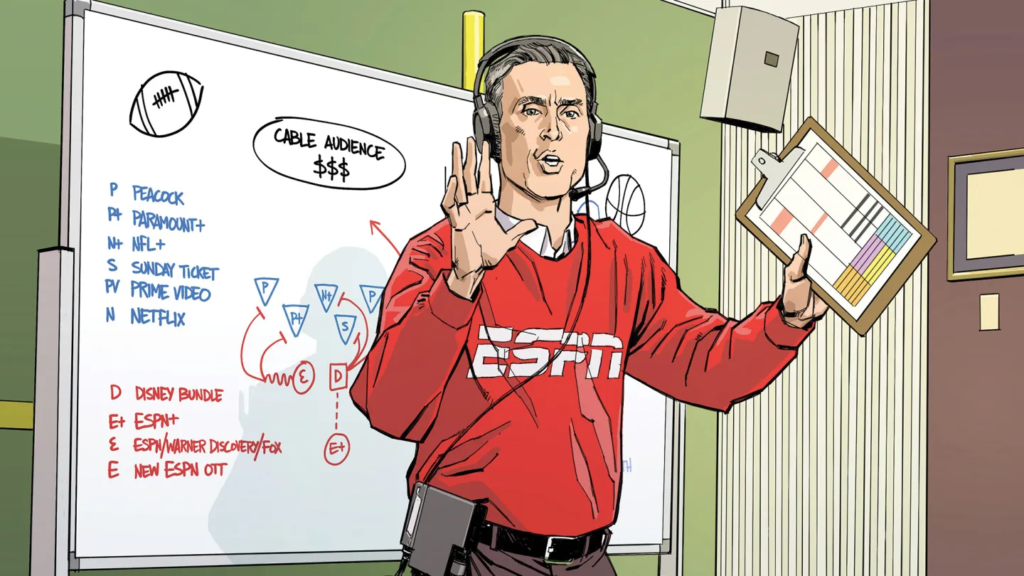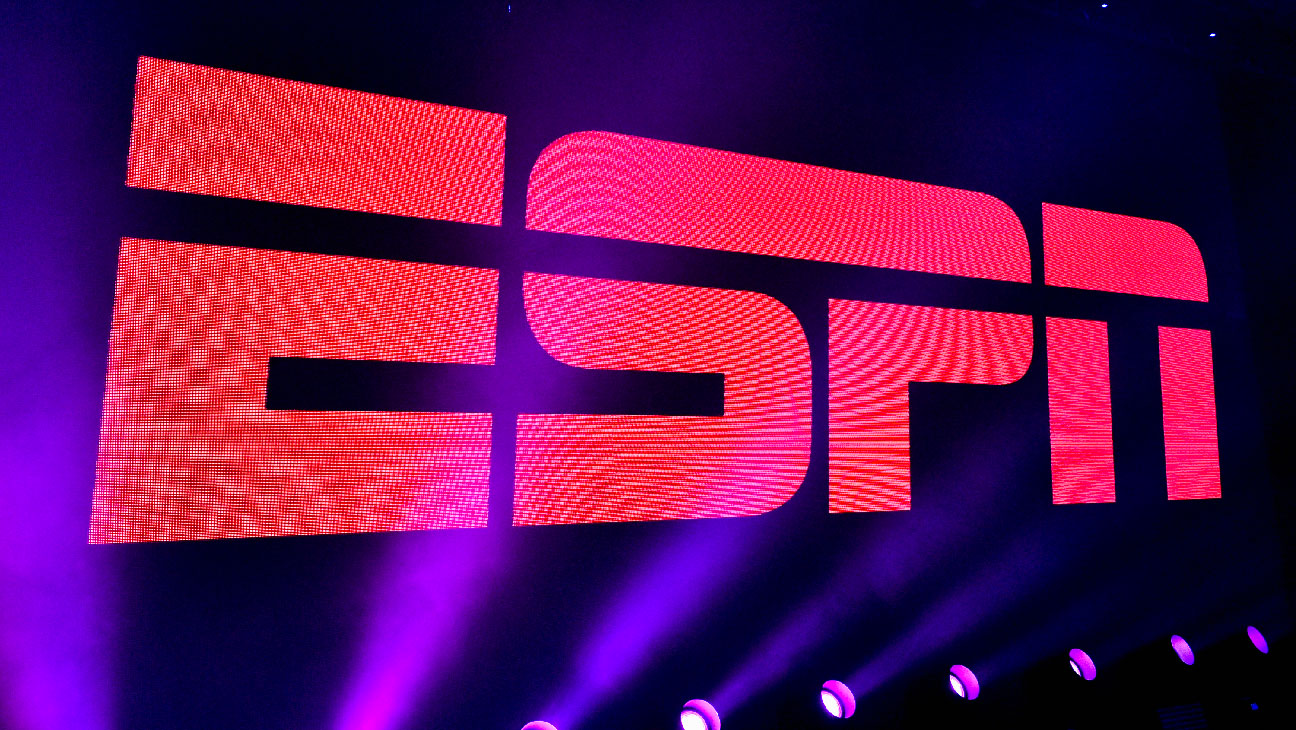When ESPN first launched in 1979, few could have predicted the profound impact it would have on sports media. Initially conceived as a 24-hour cable network focused on sports, ESPN has grown into a global multimedia empire. It dominates not only live sports broadcasting but also sports news, analysis, and entertainment. Today, ESPN is a key player in shaping how sports are consumed, from traditional TV coverage to digital platforms and mobile apps. This article takes an in-depth look at the history of ESPN, its rise to prominence, and its role in the modern sports landscape. ESPN
The Birth of ESPN

ESPN (Entertainment and Sports Programming Network) was founded by Bill Rasmussen, his son Scott Rasmussen, and Ed Eagan. The idea for a 24-hour https://www.espn.com/nfl/scoreboard sports network came during a time when cable television was still in its infancy. Initially, ESPN planned to focus on broadcasting Connecticut-area sports, but when they discovered the power of satellite technology, the scope quickly expanded to a national audience.
The network’s first broadcast was on September 7, 1979, with an introduction by Lee Leonard and George Grande. While many were skeptical about the viability of a channel dedicated solely to sports, the timing was perfect. The sports world was about to experience a ESPN boom, and ESPN was poised to take advantage of it. Early programming included sports that were underserved by major networks, such as college sports, tennis, and niche events like Australian rules football.
The network gained its first major foothold with its contract to broadcast NCAA basketball games, including the early rounds of the Men’s Basketball Tournament, which later became known as “March Madness.” This move signaled ESPN’s ability to fill a gap in sports coverage that mainstream networks had overlooked.
The Growth of ESPN in the 1980s and 1990s

Throughout the 1980s, ESPN began to expand its https://www.espn.com/nfl/schedule portfolio. The introduction of the show SportsCenter in 1979 revolutionized sports news coverage. The program, which initially aired once a day, eventually evolved into a 24-hour, round-the-clock sports news service that became ESPN’s flagship show. Today, SportsCenter is synonymous with the network and remains one of its most popular programs, delivering breaking news, highlights, and in-depth analysis.
The 1980s also saw ESPN securing broadcasting rights for more live sports. In 1984, ESPN struck a deal with the National Football League (NFL) to broadcast the draft, which was the first time the event had been televised in its entirety. The NFL Draft has since become one of the most-watched non-game sports events of the year, solidifying ESPN’s role as a go-to source for all things football.
In the 1990s, ESPN continued to grow by acquiring major sports broadcasting rights, including the NFL, Major League Baseball (MLB), the National Basketball Association (NBA), and National Hockey League (NHL) games. The network also expanded its programming to include original content, such as documentaries and talk shows, as well as expanding internationally with ESPN International, which provided global sports coverage.
ESPN’s Expansion into Digital Media

As the internet gained prominence in the late 1990s and early 2000s, ESPN began to expand its digital presence. The launch of ESPN.com in 1995 marked ESPN the company’s foray into the online sports world. The website quickly became a top destination for sports fans seeking news, scores, and expert analysis.
In addition to its website, ESPN launched ESPN Radio in https://www.espn.com/nba/scoreboard 1992, giving listeners 24/7 access to sports talk and live event coverage. By the 2000s, the network had expanded into mobile platforms with apps and online streaming services, allowing fans to access sports content on the go.
ESPN’s digital presence grew with the introduction of streaming services like ESPN3, which launched in 2005, offering live streaming of events that weren’t being broadcast on television. This was a pivotal move as it allowed ESPN to cater to a growing demand for online content while maintaining its traditional cable audience.
In 2018, ESPN took another step forward with the launch of ESPN+, a subscription-based streaming service that offered exclusive content, live sports, and on-demand programming. This platform gave ESPN the ability to adapt to the changing landscape of media consumption, where streaming was becoming a dominant force.
ESPN’s Role in Shaping Modern Sports Media

Over the years, ESPN has become more than just a network that broadcasts sports; it has played a significant role in shaping sports culture. One of the most significant contributions ESPN has made is its ability to turn sports into a year-round, 24/7 phenomenon. Whether it’s the NFL offseason, the NBA Draft, or the start of spring training for Major League Baseball, https://www.espn.com/mlb/scoreboard ESPN has created programming that keeps fans engaged even when no games are being played.
The network’s analysis shows, such as First Take ESPN and Pardon the Interruption, have helped fuel the rise of debate-style sports commentary, where pundits discuss and dissect the latest sports news and events. This type of content has become a staple of sports media, influencing other networks and platforms to adopt similar formats.
In addition to sports news and debate, ESPN has also excelled in long-form storytelling. Its critically acclaimed documentary series 30 for 30, which debuted in 2009, has explored various sports stories, controversies, and cultural moments in depth. The success of 30 for 30 cemented ESPN’s reputation not just as a broadcaster, but also as a producer of high-quality, award-winning content that appeals to both sports fans and general audiences.
Challenges and Criticisms

Despite its massive success, ESPN has not been without its challenges. One of the biggest hurdles the network has faced is the cord-cutting trend, ESPN where viewers opt out of traditional cable subscriptions in favor of streaming services. This shift in consumer behavior has led to a decline in cable TV subscribers, impacting ESPN’s revenue, as the network historically relied heavily on subscription fees from cable providers.
In response, ESPN has invested heavily in its digital platforms, particularly ESPN+, to capture the growing streaming audience. While this has helped the network adapt to changing consumption habits, it still faces competition from streaming-only platforms like DAZN, Amazon Prime Video, and others, all vying for live sports broadcasting rights.
ESPN has also faced criticism for perceived bias and overemphasis on certain sports or leagues, particularly the NFL and NBA, at the expense of other sports. Some viewers have also criticized ESPN for blending sports with political and social commentary, with detractors claiming that the network should stick to sports and avoid polarizing topics.
The Future of ESPN

As the media landscape continues to evolve, ESPN is adapting to new challenges and opportunities. Its investment in streaming platforms like ESPN+ ESPN positions the network to continue thriving in a digital-first world. Additionally, as sports fans increasingly consume content on mobile devices and demand more interactive and personalized experiences, ESPN is likely to further integrate new technologies, such as virtual and augmented reality, into its broadcasts.
The network’s commitment to live sports broadcasting https://www.espn.com/mlb/scoreboard remains strong, and its willingness to adapt to new media formats ensures that it will continue to be a dominant player in the sports media industry for years to come.
Conclusion
ESPN’s journey from a fledgling 24-hour cable channel to a global sports media powerhouse is a testament to its ability to adapt and innovate. By providing comprehensive sports coverage across multiple platforms, ESPN has become synonymous with sports media. While it faces new challenges in the digital age, the network’s continued evolution ensures that it will remain at the forefront of sports broadcasting, shaping how fans around the world engage with their favorite teams and athletes.


